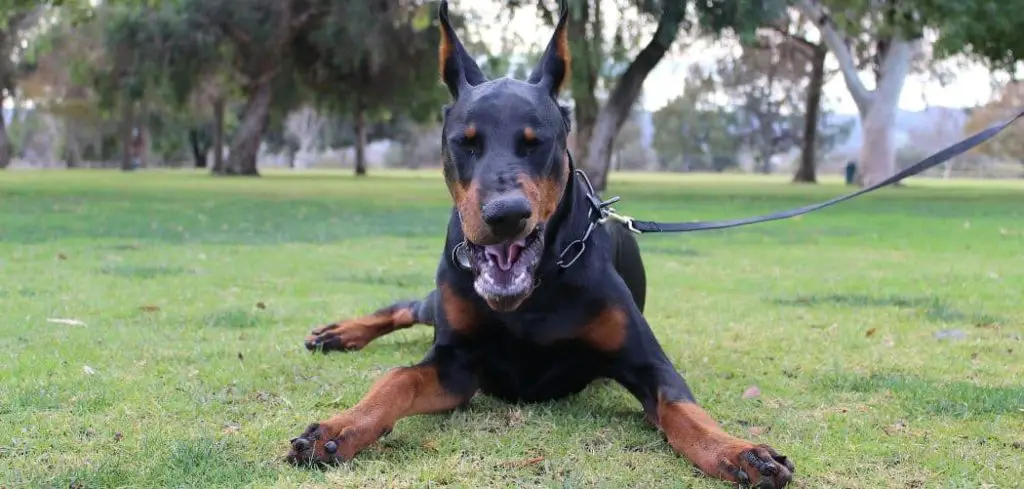When your dog is vomiting, shaking, and not eating, it’s hard not to panic—and with good reason.
This combination of symptoms often signals pain, illness, or even a medical emergency.
Shaking isn’t just about being cold or nervous; it can also be a response to internal discomfort, fever, or neurological stress. Paired with vomiting and appetite loss, it’s a warning that something serious may be happening inside your dog’s body.
We outline why this combination of symptoms might mean and how to respond before your dog’s condition worsens.
Dog Vomiting and Shaking and Not Eating: Why It Happens
When your dog is vomiting, shaking, and not eating, these symptoms frequently point to conditions such as pancreatitis, toxin ingestion, severe pain, fever, or a gastrointestinal blockage.
Vomiting and a refusal to eat suggest stomach or systemic distress, while shaking may be your dog’s response to pain, nausea, anxiety, or fever.

Dog Vomiting and Shaking and Not Eating: Common Causes
1. Pancreatitis
Pancreatitis is one of the most common reasons dogs vomit, stop eating, and begin to tremble or shake.
The condition involves inflammation of the pancreas, usually triggered by a high-fat meal or underlying illness.
Dogs with pancreatitis often show abdominal pain, a hunched posture, fever, and trembling due to discomfort.
This is a veterinary emergency, especially if your dog is refusing all food and showing signs of weakness.
Treatment includes IV fluids, pain relief, anti-nausea medications, and dietary management.
2. Ingesting a Toxin or Poison
Dogs that ingest toxic substances—like chocolate, xylitol, grapes, or household chemicals—may exhibit shaking, vomiting, and loss of appetite as early warning signs.
Depending on the toxin, symptoms may escalate to seizures, disorientation, or collapse.
If you suspect your dog has eaten something toxic, call your vet or a poison control hotline immediately. Early treatment could save your pet’s life.
3. Severe Pain or Abdominal Discomfort
Internal pain from things like bloat, ulcers, or intestinal obstruction can make dogs shake, refuse food, and vomit repeatedly.
Dogs in pain may also breathe heavily, whimper, or assume unusual postures (like lying flat on a cold floor or hunching their back).
Abdominal imaging and blood tests are often required to identify the issue, and surgery may be necessary if an obstruction or torsion is found.
Related: Dog vomiting and not eating (Causes and when to worry)
4. Fever or Infection
Dogs fighting off an infection—whether viral, bacterial, or internal—can experience fever, chills (which cause shaking), vomiting, and complete disinterest in food.
Common culprits include parvovirus, leptospirosis, or systemic infections like pyometra in unspayed females.
Fever is a strong indicator that your dog’s immune system is engaged.
If your dog is shaking and feeling warm to the touch while vomiting and refusing food, they need veterinary care.
5. Addison’s Disease (Hypoadrenocorticism)
Addison’s disease affects the adrenal glands and can cause lethargy, vomiting, shaking, diarrhea, and loss of appetite. It often appears suddenly, with symptoms that seem vague at first but worsen quickly.
Dogs experiencing an Addisonian crisis—a life-threatening collapse due to electrolyte imbalance—require immediate hospitalization.
Bloodwork can confirm the diagnosis, and long-term hormone therapy helps manage the disease.
6. Extreme Stress or Anxiety
Though less common than physical causes, some dogs shake, vomit, and stop eating during periods of extreme stress—such as thunderstorms, fireworks, separation anxiety, or a sudden change in their environment.
If your dog has no fever, no history of dietary indiscretion, and symptoms resolve quickly with calm, it may be behavioral.
Still, always rule out medical causes first.
Related: Dog vomiting and diarrhea Not Eating or drinking (Here’s why)
What to Do If Your Dog Is Vomiting, Shaking, and Not Eating
If symptoms are mild and your dog is still alert, you can take a few first-aid steps at home—though veterinary evaluation is strongly advised for these symptoms:
Withhold food for 8–12 hours to allow your dog’s stomach to settle.
Provide small sips of water or ice cubes, unless vomiting continues.
Keep your dog calm and in a warm, quiet space.
Do not give human medications, which can make things worse.
Watch for signs of worsening, like collapse, unresponsiveness, or blood in vomit or stool.
If shaking persists, vomiting is severe, or your dog still refuses food and water, don’t wait—visit your vet.
When to Call or Visit Your Vet
You should contact your veterinarian or emergency clinic immediately if your dog is vomiting, shaking, and not eating, and:
Shaking is constant or worsening
Vomiting continues for more than 12 hours
Your dog is weak, lethargic, or unable to walk normally
There’s blood in the vomit or stool
Your dog has a known history of illness (e.g., pancreatitis, Addison’s)
They haven’t had water or food in over 24 hours
A vet will perform a physical exam, check vital signs, run blood tests, and may order imaging like x-rays or ultrasound to determine the cause.
Key Takeaway
A dog that’s vomiting, shaking, and refusing to eat is clearly not okay.
These symptoms can point to pain, poisoning, infection, or other serious medical problems that need professional care.
Acting quickly—especially if symptoms are escalating—can prevent complications and help your dog get the treatment they need.
Your dog’s body language is telling you something’s wrong. Don’t wait. Trust your gut and call your vet.
